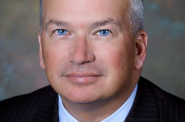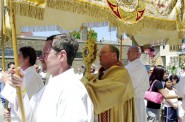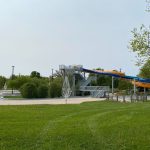Ronald Reagan
I remember when Ronald Reagan was considered too far-right to become President. The fact that he did become the chief executive shows how much America has changed since then, a change brought forth, in part, by Reagan himself. Although I never voted for the guy, and to this day I am amazed at the adulation he received in his lifetime, I respected his humility and good humor. I thought his wife was frightening, yet I admire her lifelong dedication to the man she married. Nancy Reagan has made it easy to forget that Ronald Reagan was the first divorced president.
I remember going to Jimmy Carter‘s inaugural where a five dollar ticket could get you into the “people’s” inaugural ball. By the time Reagan got into office there was absolutely no attempt at a “people’s” ball, just a few parties for the ultra-wealthy. I was in Washington for Reagan’s second inauguration when all public events – like the parade – were cancelled due to single-digit weather. The expensive, indoors events went on as scheduled.
Still, Reagan had an undeniable appeal to the common people.
I remember the Reagan years for the now-forgotten Savings and Loan scandals. (Forgotten now that the common people have paid off the debts.)
I remember the Reagan years for the introduction of evangelical Christianity as an active partner in the government, and this from a guy who rarely went to church.
I remember the Reagan years for Ollie North.
I also remember that no matter what, people loved Ronald Reagan.
Mostly, though, I remember the Reagan presidency as the first eight years of the Bush administrations.
How I miss the Reagan years.
Montana
Until last week I had only vague memories of Montana, which I had first and only seen as a teenager on a family motor trip. While others rhapsodized of the Purple Mountains’ Majesty, I kept my eyes to the manmade world before me and found it deficient.
The buildings seemed haphazardly-constructed and landscaping was an unknown art. The bleached bones scattered across the plain could well have been those of architects.
That’s the way I remembered it, and Montana still has a patched-together look. The residents in this sparsely-populated state seem as oblivious to urban planning as they are to the coastal tides.
That’s the way they want it in Montana, and no outsider is going to tell them any different. Now get off my land!
In the urban center of Billings, the state’s largest city, you get the feeling of being in a community on the rebound.
The city is laid out on a grid along the railroad tracks that gave the place its raison d’etre.
The station was built before the town lots were sold, and the city was named after the president of the railroad, just as Mitchell South Dakota was named after our own Alexander Mitchell.
Once the trains started showing up in the 1880’s Billings was on its way to becoming a rather substantial town, teeming with hotels and other accommodations for the 1,000 transient visitors who arrived there each day.
A number of these buildings survive and a few of them enjoy such 21st century incarnations as juice bar, coffee house and microbrewery. In the downtown area, taverns are everywhere, including a well-marked gay bar. One particularly dreary tavern was marked by people loitering outside, drinking in the street, or just plain passed out on the walk. The tavern inside was neon-lit – never a good sign. Beers were 75 cents, and the customers were almost entirely Native Americans.
Other taverns ranged in quality and diversity, but nearly every one of them was jammed to the rafters with slot machines. Every tavern is a casino, and some have dealers who will play a game of poker with you for a $20 buy-in. I have no idea who regulates the card dealers here, but the machines are regulated by the Montana Department of Justice, and are owned by the tavern keepers. Unlike Wisconsin, it is clear that the gaming revenues do not go to the Native Americans.
You can buy liquor to go and beer to go right up until the 2 a.m. closing in Montana, and the state has no sales tax.
Downtown Billings has established a Business Improvement District, a Tax Incremental Financing District and other modern day devices to revive the area. The public art project consists of horses posed on street corners, decorated with mosaics, paint or other materials. (The Palomino horse at the baggage claim at the Billings Airport was covered in beans.)
The streets of downtown were accented with brick, planters and a variety of ironwork of really considerable quality. The street trees were guarded by custom tree grates, some of which were made of old horseshoes. The iron had weathered to a sienna patina.
By contrast, Milwaukee’s tree grates are strictly commercial, and if we don’t coat them in paint they would weather to a heaping pile of rust in no time.
The non-rusted ironwork, the recycled horseshoes, the hotels lined up awaiting passenger trains that no longer arrive, this is Billings, with its 90,000 residents. Along with 40,000 others in Yellowstone County, it is the largest community in the state. As President William Howard Taft said at the dedication of the current railroad station (which now houses a restaurant called the Beanery) it is the principal city of the “arid west.”
Billings is level, but is nearly surrounded by the Rimrock, a high plateau. The airport is up there, and commercial features of the city include the Rim Hotel and the Kum and Go convenience store chain. It also has the largest concentration of medical facilities between Minneapolis and Denver.
As one travels west from Billings along the Yellowstone River (you have no alternate routes) the unrusted iron takes on an ominous significance: this country, never exactly lush, has experienced drought for the last six years.
Heading south at Livingston, on the way to Yellowstone National Park, the aridness of the region continues to assault the senses. For miles you see large irrigation devices spraying water into fields of grass. The water is pumped from the Yellowstone, and irrigates fields within its watershed.
The grass is for the cattle. Livestock is a big business in Montana, and it even has its own agency in the state government – the Department of Livestock, which is a sort of hybrid between the Department of Natural Resources and the National Guard.
Agents of the DOL are engaged in a vigilant fight to see that Montana’s herd remains free of Brucellosis, a mad-cow type ailment that might possibly be spread to cattle from bison. This debate is one of the most contentious in Montana, with the DOL on the one hand “harassing” the bison and with animal rights activists, on the other hand, embracing the last remaining herd of genetically-pure American Bison, the continent’s largest land animal.
The bison spend most of the year in protected Yellowstone National Park where they graze, trample, and otherwise just act ornery. In the winter they descend from the park and make themselves at home wherever they please, eating everything in sight and exacerbating the process of desertification. The playing field of the Gardiner high school, just across the border from the park, is dotted with bison droppings. The DOL spends its time in helicopters, pickup trucks and horses in this exceedingly difficult terrain herding the bison and shipping them back to the park. Not many years ago, the DOL simply slaughtered thousands of the bison and gave the meat to the Native Americans.
Montana faces some serious issues.
The Roundup
-
Conservative Power Rises in Senate
 May 18th, 2015 by Steven Walters
May 18th, 2015 by Steven Walters
-
Buffett Tour on Hold
 Jun 27th, 2005 by Michael Horne
Jun 27th, 2005 by Michael Horne
-
Museum’s Wish List
 Jun 20th, 2005 by Michael Horne
Jun 20th, 2005 by Michael Horne
















